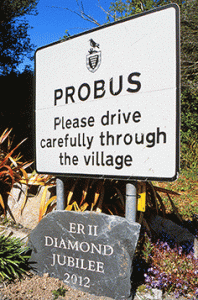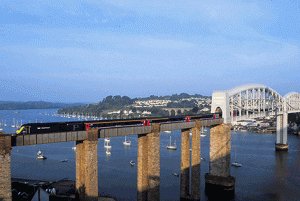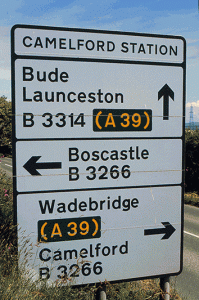 It is probably a record for this Club that a speaker should be giving his 17th talk. Stephen Gay has been giving talks to our Club for about twenty years and has not exhausted his list yet.
It is probably a record for this Club that a speaker should be giving his 17th talk. Stephen Gay has been giving talks to our Club for about twenty years and has not exhausted his list yet.
Perhaps most Probus Clubs contain a cadre of railway enthusiasts, our Club certainly has its group who obviously hold Stephen to be “The Master”. His knowledge is encyclopaedic and this coupled with a natural story telling ability make his talks both entertaining and leaves one with a desire to go and retrace his steps.
Age has caught up with Rory his trusty dog who aged over 14 years is no longer to be featured in many of Stephen’s photos. The format of his talks remains unchanged with digital photography and car ownership fervently resisted. His illustrated talk takes us by rail (mostly) from Bude down to Truro.

Stephen photographed the the Penzance – London express returning to London, crossing ‘The Royal Albert Bridge’ over the river Tamar.
As the line to Bude was closed in 1966, the Plymouth Launceston bus was taken for a two hour journey to reach the starting point which was the only hand operated lock gates in the country to connect the Holsworthy Launceston canal (1863) to the sea. Also to be seen are the remains of a narrow gauge railway that transported beach sand with its iron salts inland for agricultural purposes.
Next was Merlin’s Cave at Tintagel. Stephen found the exact view that Ken Steel used for one of his famous railway posters in the 1950s. Robert mentioned this as he believes that Ken came from the western side of Sheffield.
 Next was a bus journey interrupted by passing a modern road sign that still refers to Camelford Station. He got off the bus to photograph this sign that refers to a station that closed 50 years ago and then walked several miles into Camelford itself. That’s real railway enthusiasm. His talk covered Isambard Kingdom Brunel’s work in the region and why the viaducts have stone piers capped with brick arches above. Originally the arches were of timber but as loads became heavier and speeds faster, the timber structures were no longer strong enough.
Next was a bus journey interrupted by passing a modern road sign that still refers to Camelford Station. He got off the bus to photograph this sign that refers to a station that closed 50 years ago and then walked several miles into Camelford itself. That’s real railway enthusiasm. His talk covered Isambard Kingdom Brunel’s work in the region and why the viaducts have stone piers capped with brick arches above. Originally the arches were of timber but as loads became heavier and speeds faster, the timber structures were no longer strong enough.
It’s only possible to touch on a small sample of the talk but suffice it to say has been booked to give us another talk next year.
